Occasional Papers
The Occasional Papers of the Crow Canyon Archaeological Center is a five-volume series published by the Center from 1989–1995. The volumes include important contributions to archaeological research by Crow Canyon staff and research associates including an influential volume on communal architecture in the Pueblo Southwest edited by Bill Lipe and Michelle Hegmon; the first series of publications from the Sand Canyon Archaeological Project; the site report for Crow Canyon’s excavations of the Duckfoot Site—one of the most thoroughly documented Pueblo I occupations in the Four Corners region—and Ricky Lightfoot’s authoritative doctoral dissertation on household archaeology at Duckfoot; and Michelle Hegmon’s highly influential doctoral dissertation connecting pottery style to social dynamics at local and regional scales across the Pueblo Southwest.
Starting with The Sand Canyon Archaeological Project: Site Testing report in 1999, Crow Canyon archaeological reports began to be published in digital format and the Occasional Papers series ended.
Each of the Occasional Papers are available for free download here
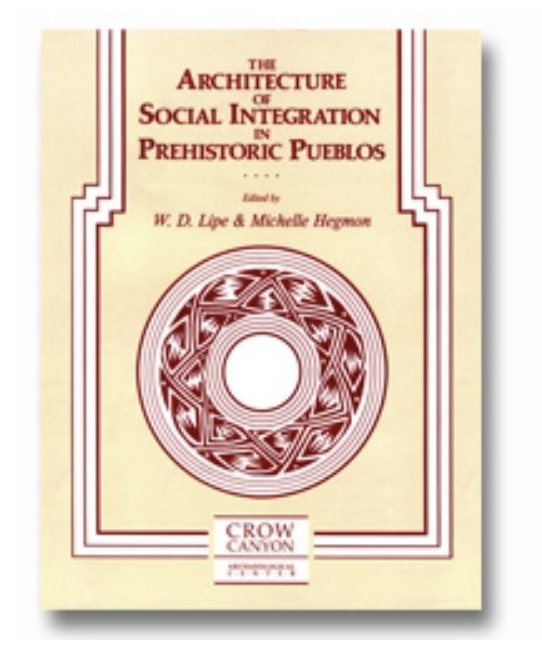
The Architecture of Social Integration in Prehistoric Pueblos
Edited by William D. Lipe and Michelle Hegmon
Occasional Papers, No. 1 (1989)
Eleven archaeologists explore new ways of looking at the social functions of prehistoric Pueblo architecture. The contributors provide theoretical, historical, and cross-cultural perspectives on Pueblo architecture and social organization at scales of integration ranging from the household to the region.
ISBN 0-9624640-0-7, paper

The Sand Canyon Archaeological Project: A Progress Report
Edited by William D. Lipe
Occasional Papers, No. 2 (1992)
The Sand Canyon Archaeological Project was a multiyear, interdisciplinary study of the Pueblo occupation of southwestern Colorado. The project focused on two classic problems in Pueblo archaeology: the shift from dispersed upland sites to large, canyon-oriented pueblos and the rapid depopulation of the Mesa Verde region in the late A.D. 1200s. This comprehensive overview includes survey results, descriptions of intensive and test excavations at multiple sites, an analysis of agricultural productivity, and an oral history of twentieth-century homesteading.
ISBN 0-9624640-1-5, paper
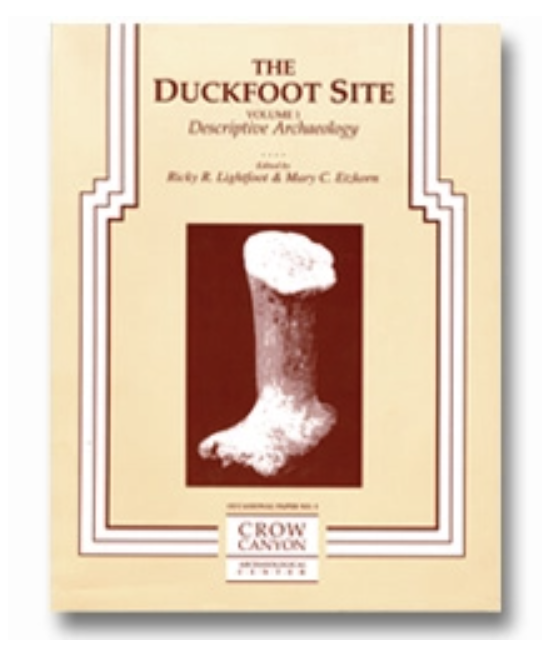
The Duckfoot Site, Volume 1: Descriptive Archaeology
Edited by Ricky R. Lightfoot and Mary C. Etzkorn
Occasional Papers, No. 3 (1993)
The Duckfoot site was a small, 19-room pueblo occupied during the late ninth century A.D. When the inhabitants of the pueblo abruptly left about A.D. 880, many of the structures were deliberately destroyed with usable tools, pottery vessels, and other artifacts left inside. Excellent preservation of the site presented archaeologists with a rare opportunity to study early Pueblo life. This first book of a two-volume set describes in detail the excavations and basic laboratory analyses.
ISBN 0-9624640-2-3, paper
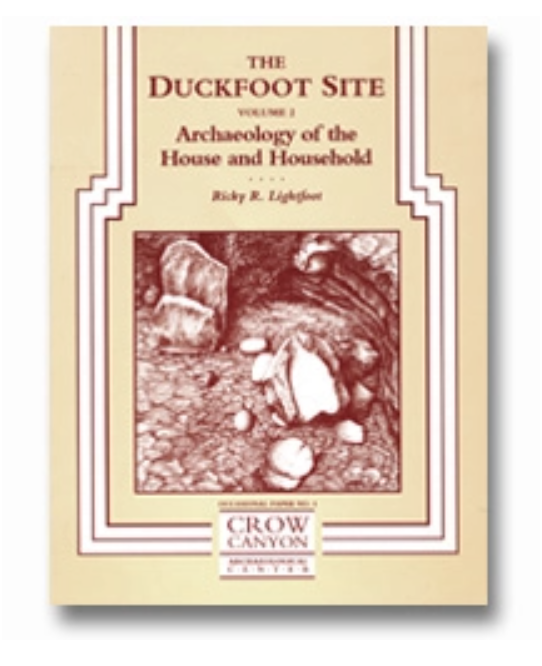
The Duckfoot Site, Volume 2: Archaeology of the House and Household
Ricky R. Lightfoot
Occasional Papers, No. 4 (1994)
The concept of household is so familiar that we often take it for granted, yet there is remarkable diversity in how different peoples define this fundamental building block of society. This case study offers one approach for using architecture, features, and artifacts—particularly pottery—to infer the social organization of the people who left the materials behind.
ISBN 0-9624640-5-8, paper
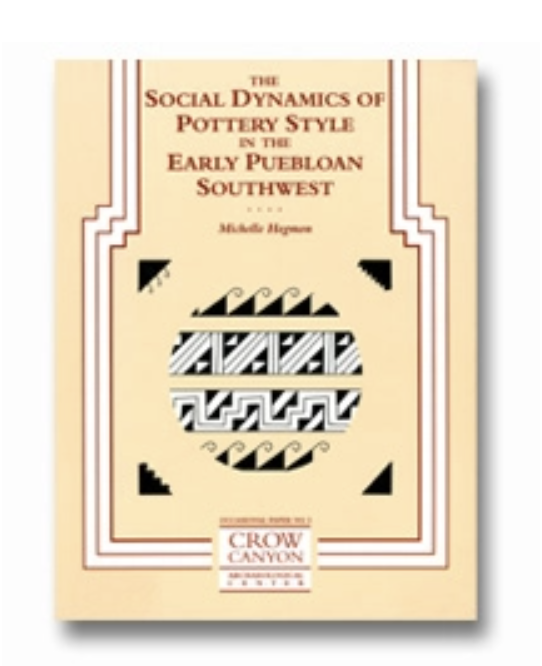
The Social Dynamics of Pottery Style in the Early Puebloan Southwest
Michelle Hegmon
Occasional Papers, No. 5 (1995)
In this groundbreaking study, Hegmon develops a cross-cultural perspective on style as an instrument and expression of social interaction. She shows how cultures create and manipulate pottery design to make and mark a variety of social distinctions. The focus of her work is the Pueblo occupation of southwestern Colorado and northeastern Arizona during the ninth century A.D., a century marked by rapid population growth and significant differences in social development in the two regions.
ISBN 0-9624640-7-4, paper, SOLD OUT.
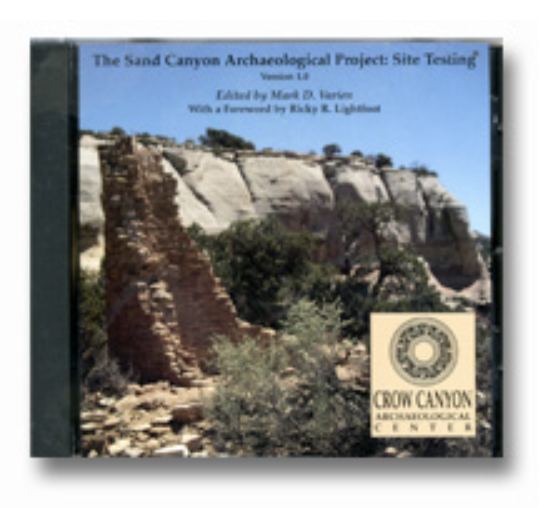
The Sand Canyon Archaeological Project: Site Testing
Edited by Mark D. Varien
CD-ROM, Vers. 1.0. (1999)
View the Online Report
This volume reports on the testing of 13 archaeological sites as one part of the larger Sand Canyon Archaeological Project. Site testing was designed to bridge the gap between the archaeological survey of the Sand Canyon locality and the intensive excavations of two sites, Sand Canyon Pueblo and Green Lizard. The careful attention to sampling, which ensured comparability among the 13 sites, makes this project the most detailed study available for Pueblo III communities in the Mesa Verde region.
ISBN 0-9624640-8-2
